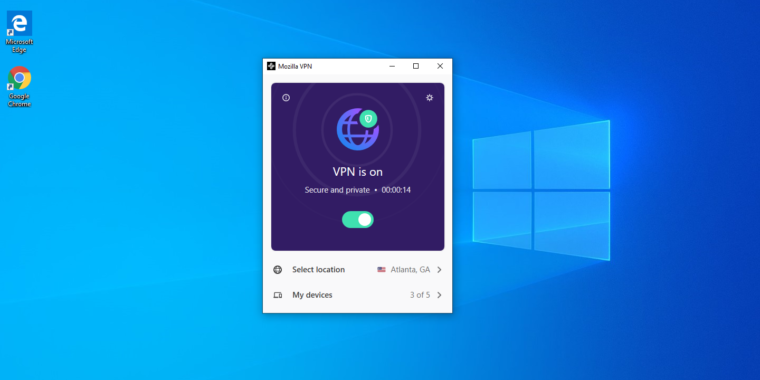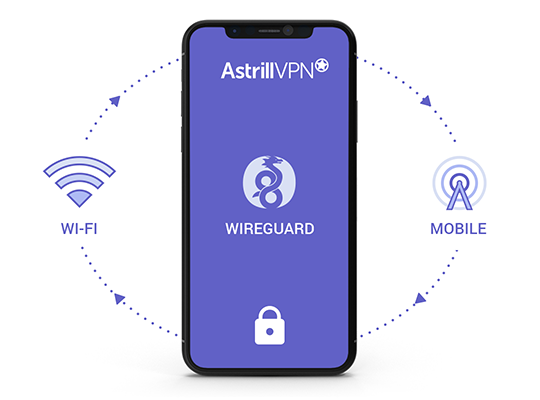
- #IVPN WIREGURD HOW TO#
- #IVPN WIREGURD INSTALL#
- #IVPN WIREGURD ANDROID#
- #IVPN WIREGURD CODE#
- #IVPN WIREGURD DOWNLOAD#
Private non-logging DNS servers accessible through our VPN. Offers protection against DNS, IPv6, disconnection and WebRTC leaks.
#IVPN WIREGURD ANDROID#
Killswitch / Firewall option on macOS, Windows, Linux, Android and using the built-in On-demand feature on iOS. Remember, the client must initiate the VPN tunnel so it obviously needs to know the public IP address (and UDP port) of the remote WireGuard server.
#IVPN WIREGURD HOW TO#
Forward port 51820 on your Router to your Raspberry Pi. Learn how to make a Raspberry Pi VPN server using OpenVPN, PiVPN, Surfshark, and WireGuard You can set up a VPN tunnel for access to your home network. AntiTracker that blocks ads, adware, malicious websites and data harvesting trackers.
Add a new WireGuard connection to your phone, by scanning the QR code. Step 2 Create the Wireguard Container Using Portainer and a Stack. 
#IVPN WIREGURD INSTALL#
Install the WireGuard app on your phone. #IVPN WIREGURD CODE#
Download/Open the file /ssl/wireguard/myphone/qrcode.png stored on your Hass.io machine, e.g., using Samba, Visual Studio Code or the Configurator add-on. Forward port 51820 (UDP!) in your router to your Hass.io IP. /usr/bin/env bash PiVPN: Trivial OpenVPN or WireGuard setup and configuration Easiest setup and mangement of OpenVPN or WireGuard on Raspberry Pi. WireGuard is a new open-source VPN protocol. WireGuard is a game-changer in the world of VPN protocols and has already got some credit in the cybersecurity industry. Check the logs of the “WireGuard” add-on to see if everything went well. WireGuard is a new, experimental VPN protocol that aims to offer a simpler, faster, and more secure solution for VPN tunneling than the existing VPN. Although OpenVPN is the most popular option, it was developed over 20 years ago and internet technologies have made some progress since 2001. #IVPN WIREGURD DOWNLOAD#
Change the name of the peer to something useful, e.g., myphone. Run pivpn -qr on the PiVPN server to generate a QR code of your config, download the Wireguard app Android link / iOS link, click the + sign and scan the QR. Set the host configuration option to your (external) address, e.g.,.  Search for the “WireGuard” add-on in the add-on store and install it. The add-on takes care of a lot of things for you (if you want).įollow the following steps for installation & a quick start: Check the service status: systemctl status wg-quickwg0. Reboot your computer system to verify the automatic connection on startup works as expected. Start the new service immediately: sudo systemctl start wg-quickwg0. WireGuard is pretty simple, however, can be quite complex for a user that isn’t familiar with all terminology used. Add the WireGuard service to systemd: sudo systemctl enable rvice sudo systemctl daemon-reload. WireGuard is currently under heavy development, but already it might be regarded as the most secure, easiest to use, and the simplest VPN solution in the industry. Initially released for the Linux kernel, it is now cross-platform (Windows, macOS, BSD, iOS, Android) and widely deployable, including via an Hass.io add-on! Part 2: Installing PiVPN (with Wireguard) on a Raspberry Pi During the setup, select the WireGuard option on the Installation Mode page. Select the required Single or Multi-hop server configuration, Port, Internet protocol and hit Generate QR code Launch the WireGuard app, tap on the Add a tunnel button in the middle > Create from QR-code. WireGuard is designed as a general-purpose VPN for running on embedded interfaces and supercomputers alike, fit for many different circumstances. It intends to be considerably more performant than OpenVPN.
Search for the “WireGuard” add-on in the add-on store and install it. The add-on takes care of a lot of things for you (if you want).įollow the following steps for installation & a quick start: Check the service status: systemctl status wg-quickwg0. Reboot your computer system to verify the automatic connection on startup works as expected. Start the new service immediately: sudo systemctl start wg-quickwg0. WireGuard is pretty simple, however, can be quite complex for a user that isn’t familiar with all terminology used. Add the WireGuard service to systemd: sudo systemctl enable rvice sudo systemctl daemon-reload. WireGuard is currently under heavy development, but already it might be regarded as the most secure, easiest to use, and the simplest VPN solution in the industry. Initially released for the Linux kernel, it is now cross-platform (Windows, macOS, BSD, iOS, Android) and widely deployable, including via an Hass.io add-on! Part 2: Installing PiVPN (with Wireguard) on a Raspberry Pi During the setup, select the WireGuard option on the Installation Mode page. Select the required Single or Multi-hop server configuration, Port, Internet protocol and hit Generate QR code Launch the WireGuard app, tap on the Add a tunnel button in the middle > Create from QR-code. WireGuard is designed as a general-purpose VPN for running on embedded interfaces and supercomputers alike, fit for many different circumstances. It intends to be considerably more performant than OpenVPN. 

It aims to be faster, simpler, leaner, and more useful than IPsec, while avoiding the massive headache. WireGuard® is an extremely simple yet fast and modern VPN that utilizes state-of-the-art cryptography. Basically, any time my phone is out of my house, it automatically hops on my in-home VPN. Linux - Autostart OpenVPN in systemd (Fedora) New favorite thing: PiVPN + Wireguard + on-demand activation.Linux - Webpages do not load or DNS leaks when connecting via NetworkManager.Linux - Autostart OpenVPN in systemd (Ubuntu).Start the new service immediately: sudo systemctl start your computer system to verify the automatic connection on startup works as expected.Ĭheck the service status: systemctl status remove the service and clean up the system: sudo systemctl stop systemctl disable rm -i systemctl daemon-reload create the client profile > pivpn add stored in > /home/user/configspivpn -qr generate a QR Code to scan with a mobile device > pivpn -qr to reconfigure >. DNS may or may not be applied when systemd brings the wg0 interface up.Īdd the WireGuard service to systemd: sudo systemctl enable systemctl daemon-reload Note: You may have to replace the Endpoint hostname with the WireGuard server IP address in the WireGuard configuration file.








 0 kommentar(er)
0 kommentar(er)
